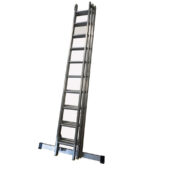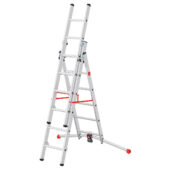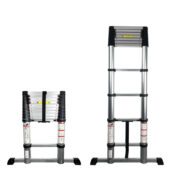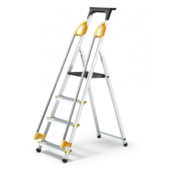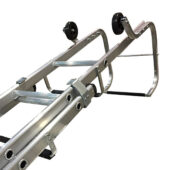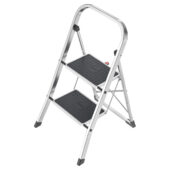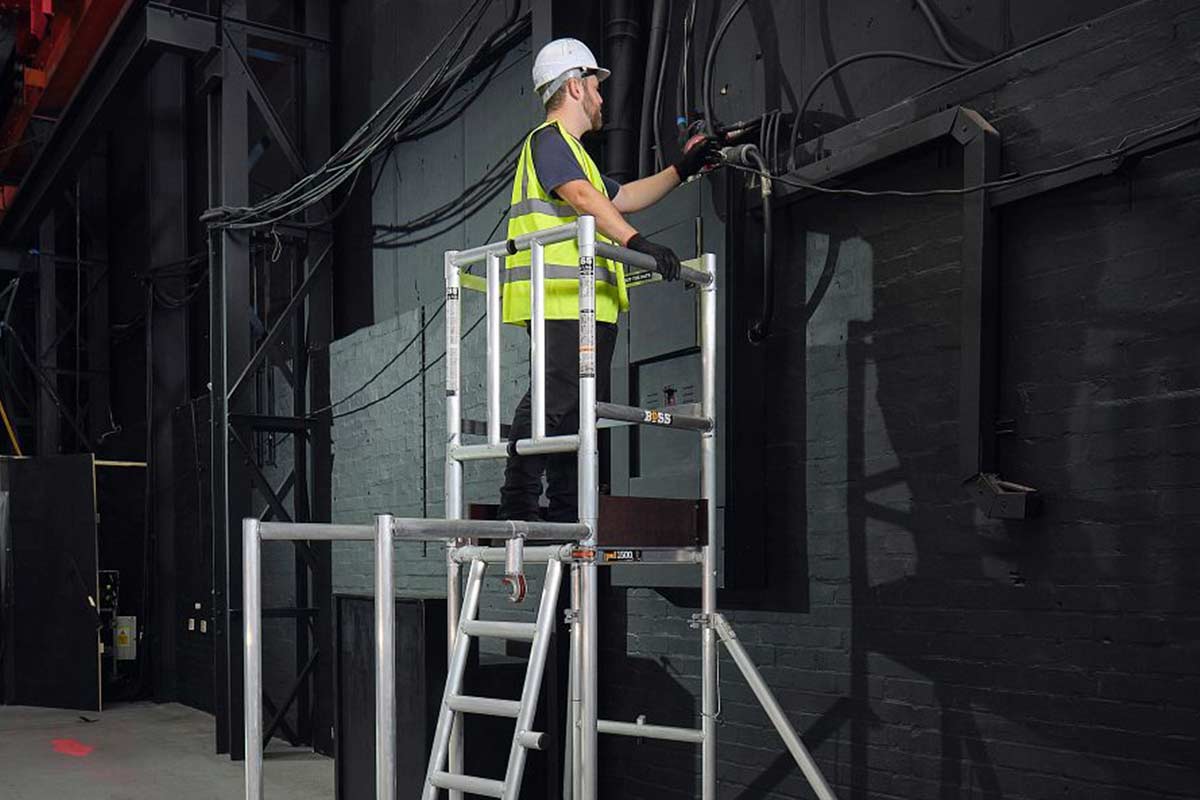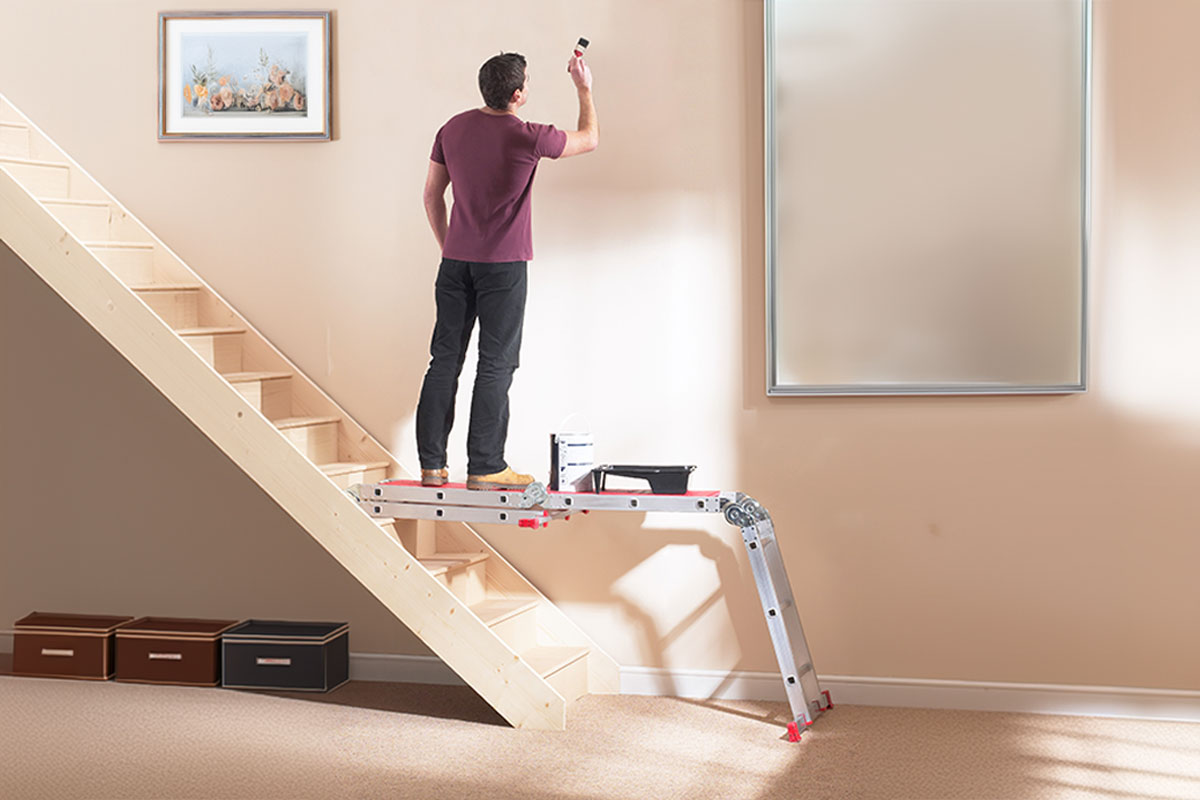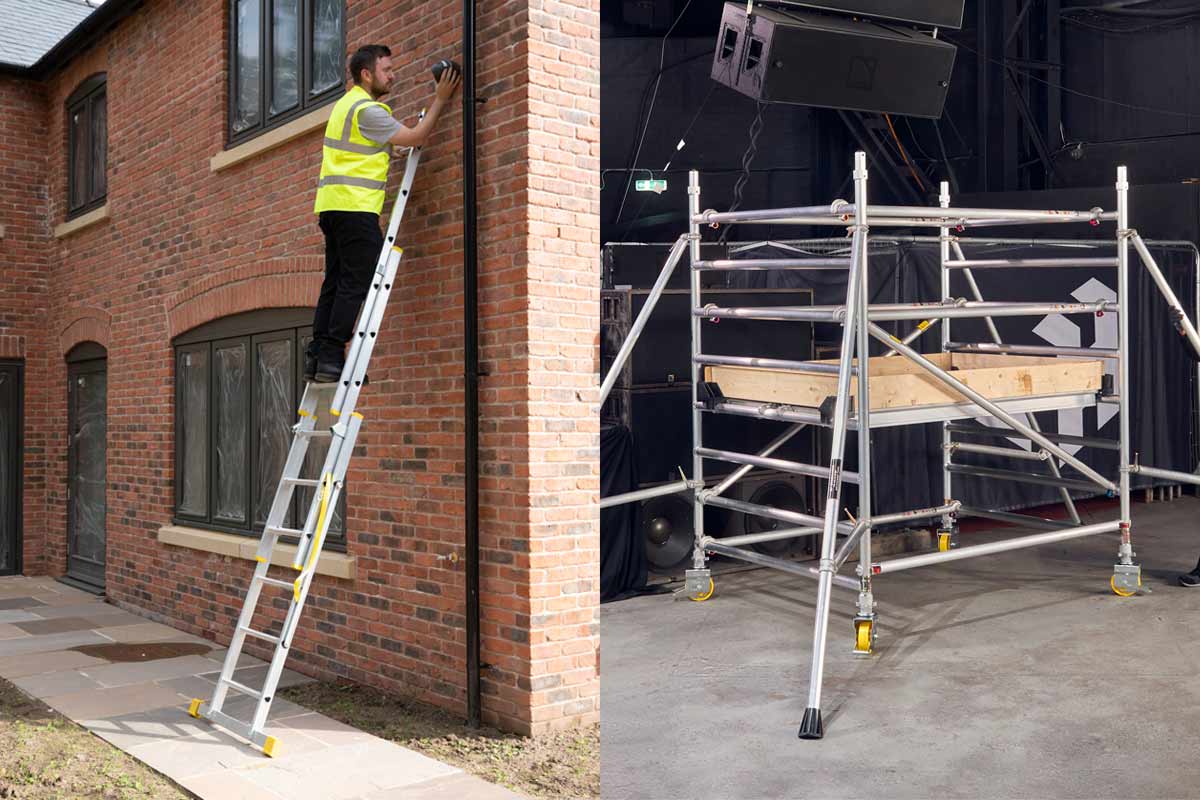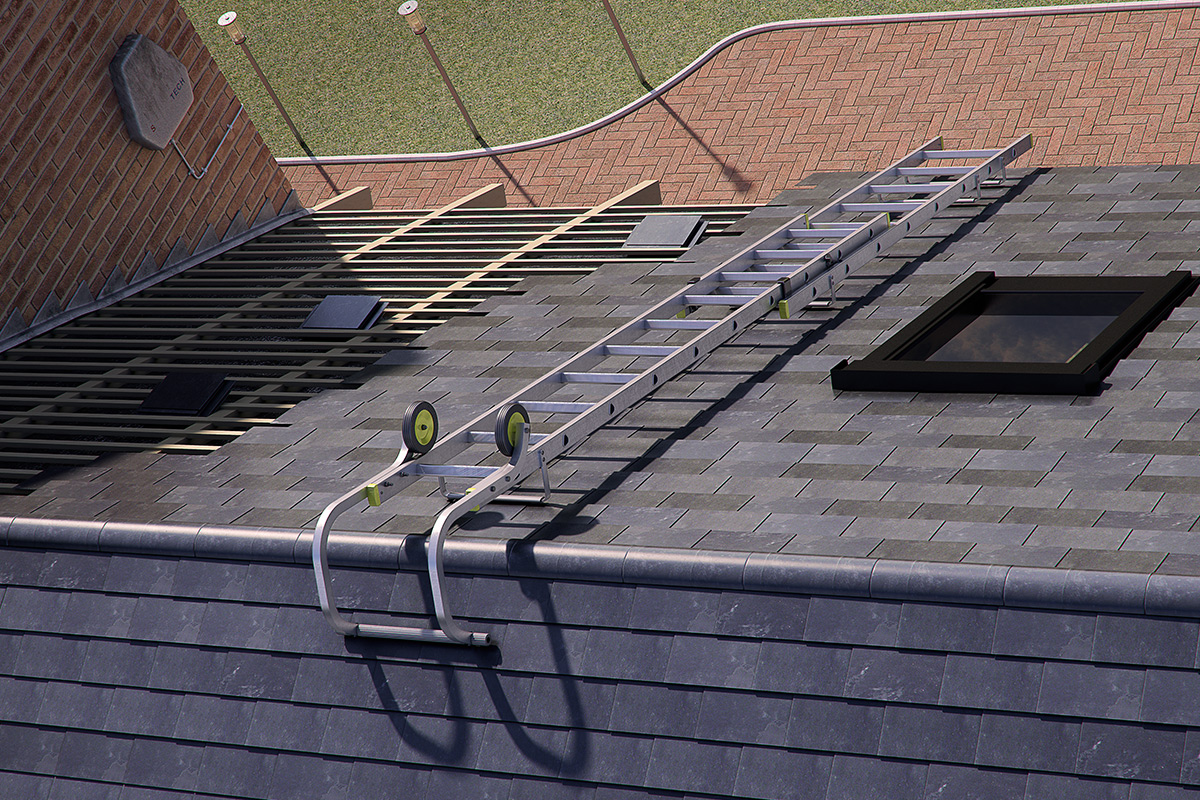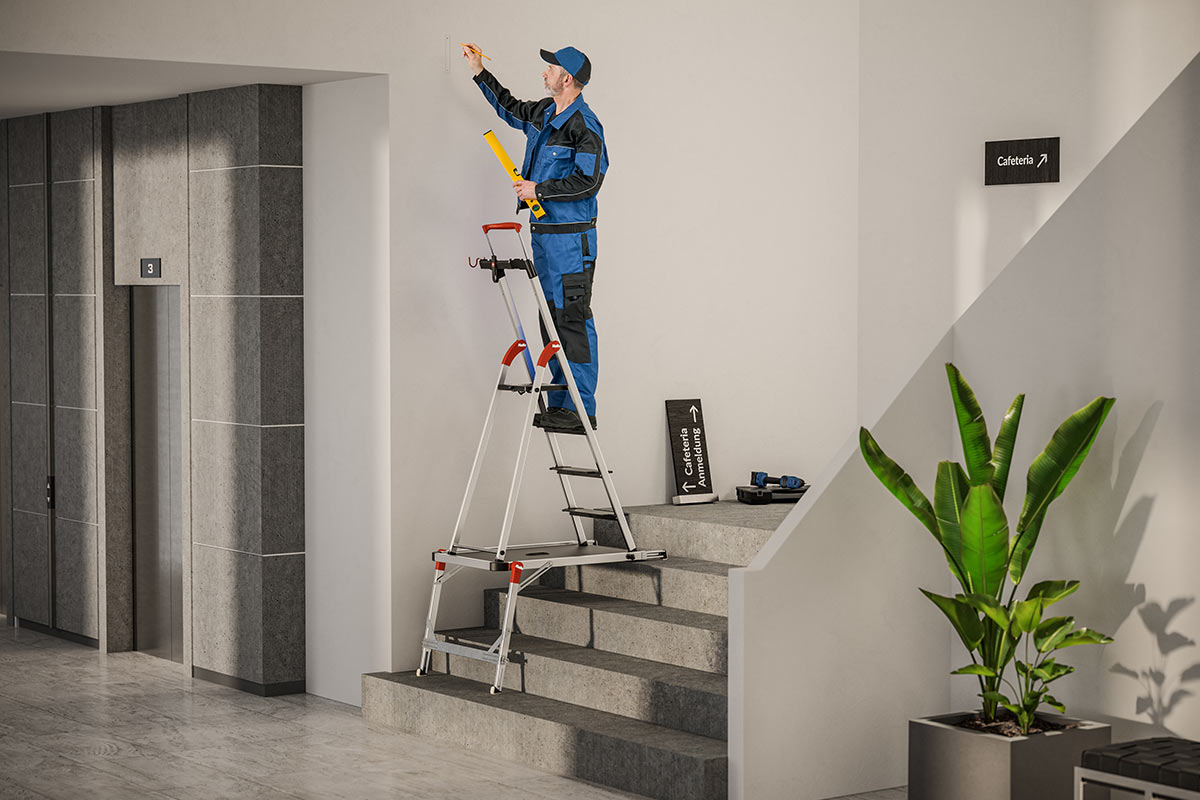Ladder Buying Comprehensive Guide
May 16, 2024 | Nate Cord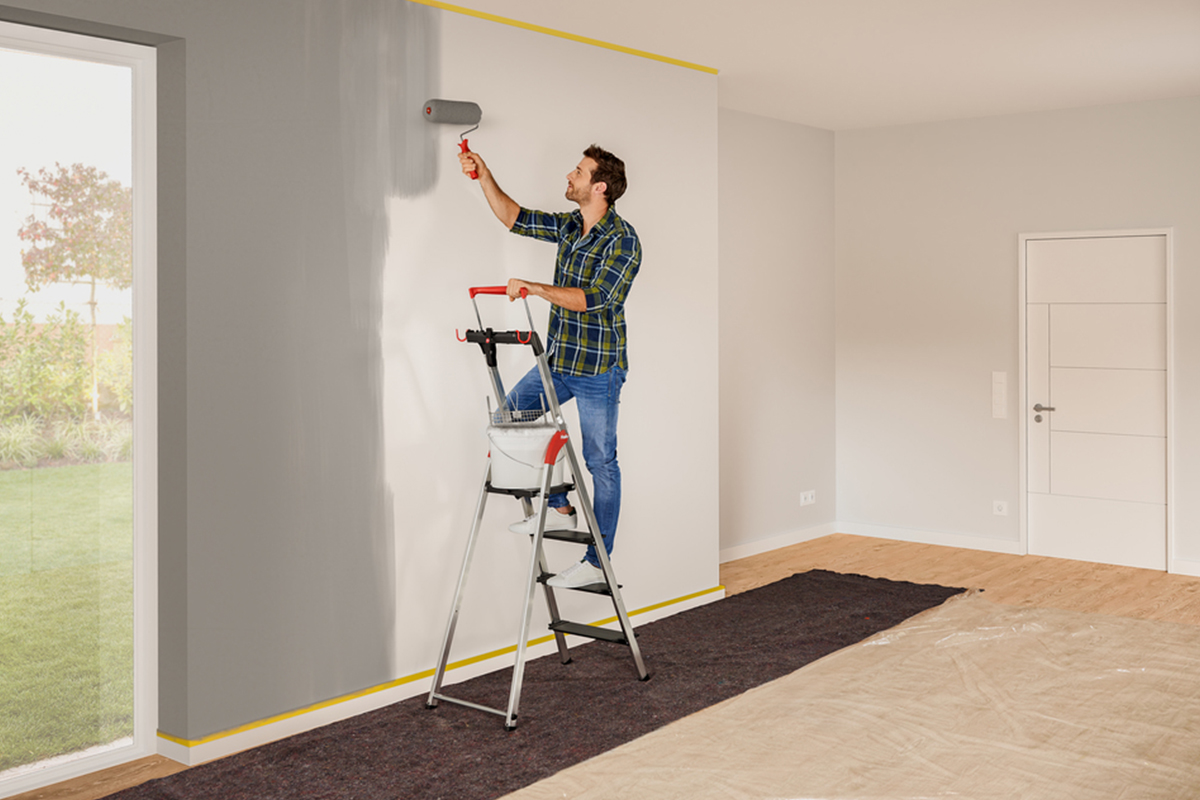
From roofing, painting and decorating jobs to cleaning your windows and gutters, ladders can be useful for a range of tasks. However, with several different types of ladder out there, picking the right one for your trade or do-it-yourself job can be a difficult task. After all, you must use a ladder that is safe and large enough for your needs. In this guide, we’ll help make choosing a ladder simple. From the types of ladders available and what each one is best for, to the questions you should ask before hiring or buying a ladder, our guide will help you make an informed decision based on your specific requirements.
Find your new ladder today to finish those DIY jobs for good!
Ladder Buying Comprehensive Guide – Types of Ladders
Ladders come in various types, with each designed for specific tasks and environments. The main types of ladders are as follows:
Step Ladders
A step ladder is a self-supporting, portable ladder with flat steps on one side and a support frame on the other. Twin-step ladders allow you to use both sides, but these are less common.
The main feature of a step ladder is their four legs, which allow them to stand upright (and lock into an “A” shape) without support from other surfaces .Because of their height, step ladders are most suited for household tasks, such as painting, decorating, cleaning windows and changing light bulbs, or for other small jobs where you don’t have a surface that can support a larger ladder.
There are a few main types of stepladders, including: swingback step ladders, platform step ladders, small step stools and fibreglass.
Swingback & Platform
Regularly used for both trade and domestic work, swingback & platform stepladders are ideal for projects that require little equipment and are easy to transport.
Swingback step ladders are made without a platform at the top of the ladder. These can be moved quickly from one place to another for small jobs requiring little tools.
A platform stepladder comes with extra space for users to lay down tools and materials when working. For instance, if you’re working outdoors or off-grid, these stepladders offer convenience for organising tools and materials. Also, a platform stepladder is a good option if you need to work at height for a longer period of time.
Small Step Stools
Small step stools are light, compact and sturdy, and perfect for getting items that may be just out of reach, such as light fittings. So, if you need to reach the back of a shelf, or change a lightbulb, a small step stool is the ladder for the job.
Fibreglass Stepladders
If you are working with thermal or electrical hazards, a fibreglass stepladder is a good option. Non-flammable and non-conductive, many tradespeople use these ladders on a daily basis, protecting them against fire and electrocution risks.
Extension Ladders
An extension ladder is a ladder that can be extended to reach higher places. There tend to be two or more sections that slide and lock into place, allowing the ladder to be extended at different heights, often between 2.2m – 5.5m, but extension ladders can reach up to a maximum height of 10 metres.
Extension ladders are not self-supporting, but instead require a wall or surface for support. The good news is that this type of ladder can be used on many different surfaces.
The lower section usually has pivoting feet that adjust to provide support at various angles, and most extension ladders have a stabilising base to help prevent them from falling over.
Because they only have two legs, extension ladders can be used almost completely upright, as long as they are connected to the structure they are leaning against. This makes them most suitable for outdoor projects that require some height, such as painting or cleaning gutters and windows.
Due to the abovementioned sliding sections, extension ladders are also compact, allowing you to save storage space.
Roof Ladders
Roof ladders extend very high up, and have hooks that secure to the ridge of a roof. These ladders tend to be used by tradespeople who need access to a roof for a range of different reasons, from roof and gutter repairs to solar panel and skylish installation and chimney repairs.
Most dedicated roof ladders have weight spreading bars on the back of the ladder, which even out the weight impact on the roof, helping to avoid damage to the tiles. On the other end, roof ladders often have wheels which allow the user to move it along the roof once attached.
Keep in mind that, for larger jobs on a roof, you must, by law, put up proper scaffolding.
Combination Ladders
Combination ladders, also known as multi-purpose or multi-position ladders, have lots of different sections that can be assembled into different positions. In essence, they combine the features of different types of ladders into a single, adjustable unit. Common arrangements include:
- Single or twin-sided step ladder for lower height jobs.
- Extension for jobs at height, which tend to use the full length of the ladder.
- Scaffold for when you need a platform on the top, such as for storing tools.
Their versatility means these ladders can be adjusted for a range of heights across different levels of access, including above stairways.
Combination ladders are excellent all-rounders, making them perfect for regular, standard use. If you intend to use your ladder frequently and for various types of tasks, a combination ladder is a good choice.
Telescopic Ladders
A telescopic ladder — sometimes known as a folding ladder — is a type of collapsible, extendable ladder that can be adjusted to various heights, but slots inside itself when not extended, just like a telescope.
Telescopic ladders are lighter and easier to set up and transport than extension ladders, but have a much lower height and weight limit. This makes them perfect for people who need to reach moderate height on the move, or for those with limited space.
This is because telescopic ladders can be folded into a small size for storage, or to be kept in car boots, vans, cupboards, wardrobes, and other small storage areas.
Fibreglass Ladders
Fibreglass ladders – otherwise known as glass reinforced plastic ladders – are resistant to electricity and high levels of heat.
Because fibreglass ladders do not conduct electricity and are non-flammable, these ladders are ideal for tradespeople who will be working in dangerous areas with live electricity, such as around power lines, as it will protect them from electrocution or fire.
As the name suggests, Fibreglass ladders are made from fibreglass, which is ideal if you’re searching for a lightweight yet sturdy model.
Loft Ladders
Loft ladders are installed on a trapdoor or hatch leading up to the loft (or attic), typically in homes and offices where there is loft space. The typical mechanism means that the ladder folds out, but scissor and sliding mechanisms are also available.
These are perfect for saving space if you want to get into your attic – the ladder is simply stored in the attic until you need it. However, there are strict weight limits, and the shape and size of your loft can limit your options.
Specialist Ladders
As well as all of the standard types of ladder, there are a range of specialist ladders that have been designed for specific applications, such as for use with caravans, conservatories, gardens, and windows. All will have safety and access features for their intended purpose.
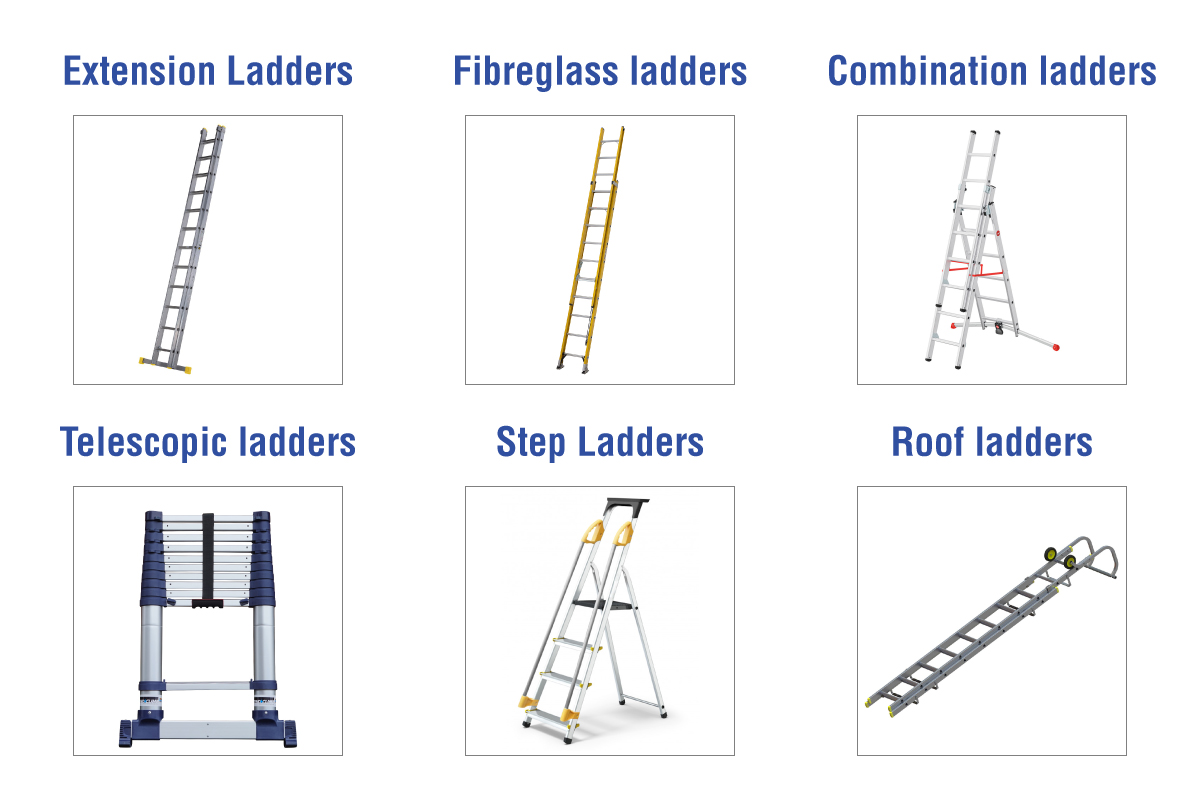
| Ladder Type | Classification | Maximum Load | Application |
|---|---|---|---|
| Step Ladders | EN 131 | 150kg | Household tasks and light maintenance. |
| Extension Ladders | EN 131 Class 1 | 150kg | Exterior work, reaching high places, roofing. |
| Roof Ladders | EN 131 Class 1 | 150kg | Roof access and maintenance. |
| Combination Ladders | EN 131 Class 1 | 150kg | Versatile for both indoor and outdoor use. |
| Telescopic Ladders | EN 131 Class 1 | 150kg | Portable with multi-height requirements. |
| Fibreglass Ladders | EN 61478, EN 131, Class 1 | 150kg | Electrical work and industrial applications. |
| Loft Ladders | EN 14975 | 150kg | Attic and loft access. |
| Specialist Ladders | Various | Various | Specific professional tasks and applications, such as for windows, caravans, and surveyors. |
Platforms and Scaffolding Towers
When you need to reach a large area of wall or a surface that is over 9m high, a platform or scaffolding tower might be a better alternative.While technically not ladders, both perform much of the same function as ladders, but with additional height and weight limits. These also offer a more robust platform with enhanced stability, which is crucial for extended periods of elevated work.
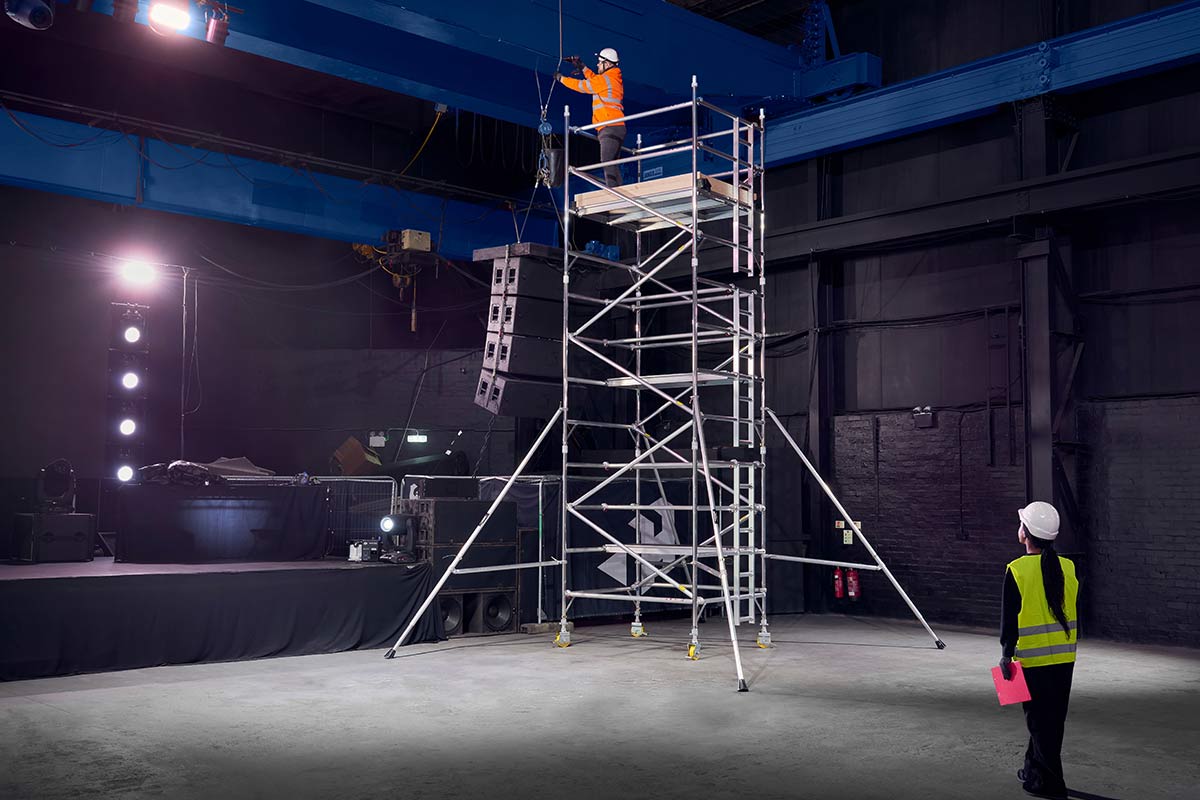
What Ladder Do I Need?
First things first, you should only purchase or use a step ladder or ladder that conforms to the relevant British or European Standard. In addition to this, the ladder you purchase should be clearly marked with the load it can support, so you know it is safe for your job.
If you hire or borrow equipment, inspect it before you use it to check there are no dents, splints or risk of slips, and that the ladder is in good condition.
Once safety is considered, you should ask yourself: What job is this ladder for? What height do I need it to reach? Do I need it to be made from a material or have certain treads? How long will I need to use the ladder for? How much space do I have to store and transport the ladder?
Job
Always take care to choose the correct standard of ladder for the job in hand. Remember: For household tasks and low-risk maintenance, a step ladder will do the trick. However, for trade and industrial jobs, you will likely need an extension, combination or roof ladder (depending on the job).
For frequent use, invest in a durable, higher-quality ladder. For occasional use, a cheaper model may suffice, providing it meets British and European safety standards.
Material
Regardless if it is for trade, industrial or domestic use, most ladders are made of aluminium. However, if you are working near or with electricity, you will need a fibreglass ladder instead.
You might also find that some loft ladders are made of wood, which is a better looking alternative to aluminium.
Height
You need to consider the height that you will be working at and the height that you can safely reach. We recommend you always choose a ladder slightly higher than you might need to avoid over reach.
Typically, step ladders tend to range from 1.0m – 6.0m, whereas extension ladders can measure up to 7-8m. Remember that, when a ladder rises 9 metres or more above its base, think about using landing areas or rest platforms at suitable intervals.
Treads
Ladder treads are the number of individual steps that a ladder has. Treads tend to be able to hold lots of weight without the risk of snapping or slipping. However, some trade-grade ladders might have wider treads with rubber tops or grooves to make them more suited to work boots, for example.
Storage & Transportation
Considering the height of the ladder is also influenced by how you plan to transport the ladder (and how often), and the amount of storage space you have. Collapsible ladders require less storage space than full-length ladders, for example.
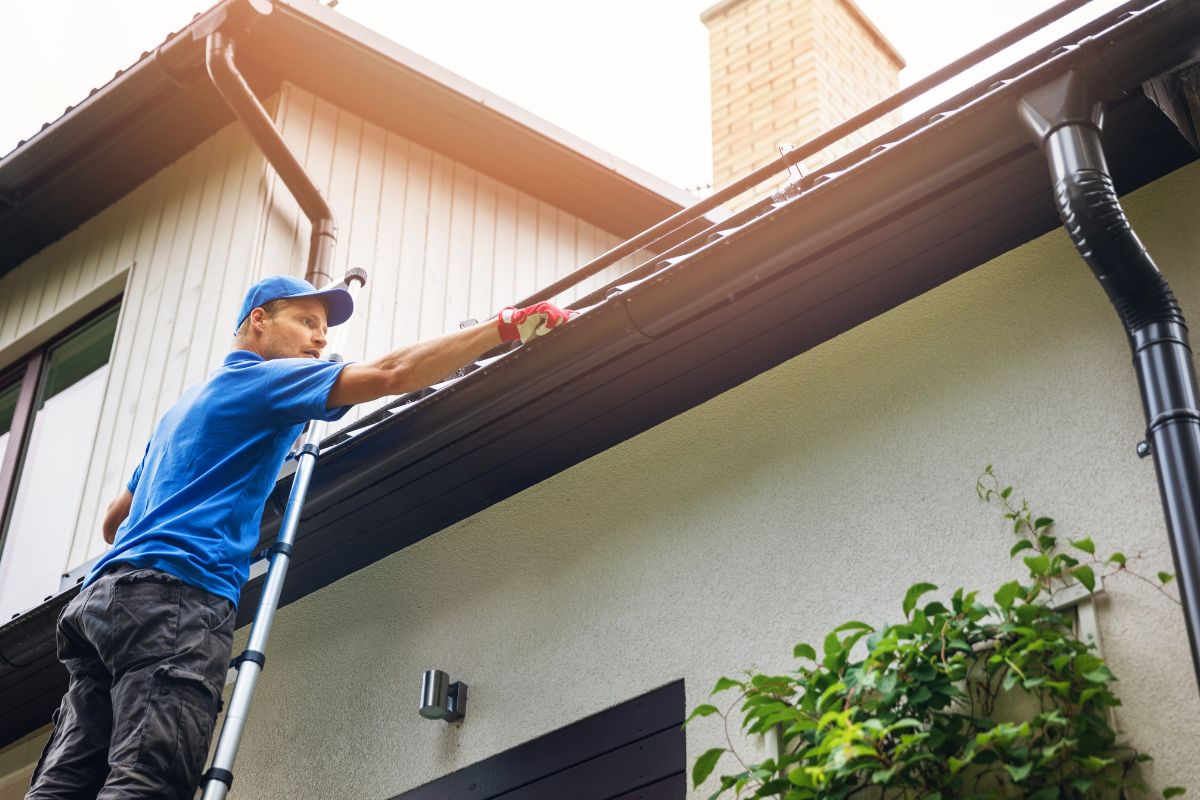
Ladder Features & Accessories
When choosing a ladders, make sure to consider the features or additional accessories you’d like it to include, such as:
- A platform or folding work shelf on some step ladders lets you keep tools and materials within reach. You can also purchase trays, platforms, buckets and paint cups that are compatible with some ladders.
- A safety rail and slip-resistant steps can help provide extra support and stability while climbing and using the ladder.
- A levelling system on some ladders means you can adjust the ladder to accommodate uneven surfaces. For ladders that don’t have the built-in system, you can purchase levellers to attach.
- Some ladders come with interchangeable feet for use on different surfaces, such as the EasyClix feet for gardens and living spaces. End covers (or “wall bumpers”) can also be added to help prevent the ladder from damaging a wall.
- A lighting collar can be secured to the top of the ladder to attach to lighting and traffic light columns and telegraph poles.
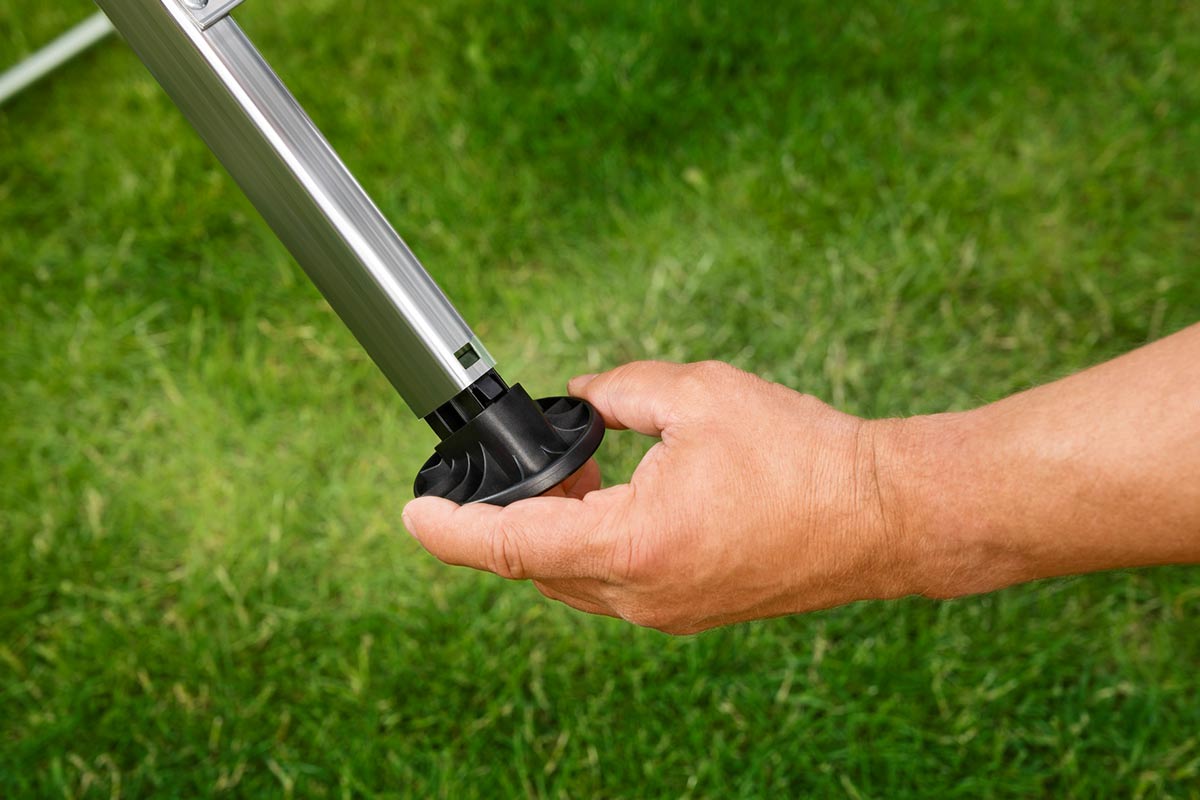
Conclusion
Choosing the right ladder for your tasks is difficult, but with the information provided in this guide, you’re well-equipped to make an informed decision. Whether you need a sturdy step ladder for household chores, a versatile combination ladder for various jobs, or a specialised ladder for specific professional tasks, understanding the different types, their features, and their best uses will ensure your safety and effectiveness. Remember to prioritise British and European safety standards and consider your specific needs regarding height, material, storage and additional features.
Looking for a reliable ladder or other premium access equipment? At Ladders4Sale, we offer a range of ladders, platforms, steps, towers and accessories for all trade and do-it-yourself jobs at unbeatable low prices. Better yet, all of our products come with lifetime support – after your initial purchase, we continue to provide ongoing support and assistance for free. In addition to this, all orders come with free shipping to mainland UK.
If you require additional advice or have a question for our team, don’t hesitate to get in contact with us using this form or via phone at 01639 849847.
Related Products
Be the first to know the latest industry news and offers
